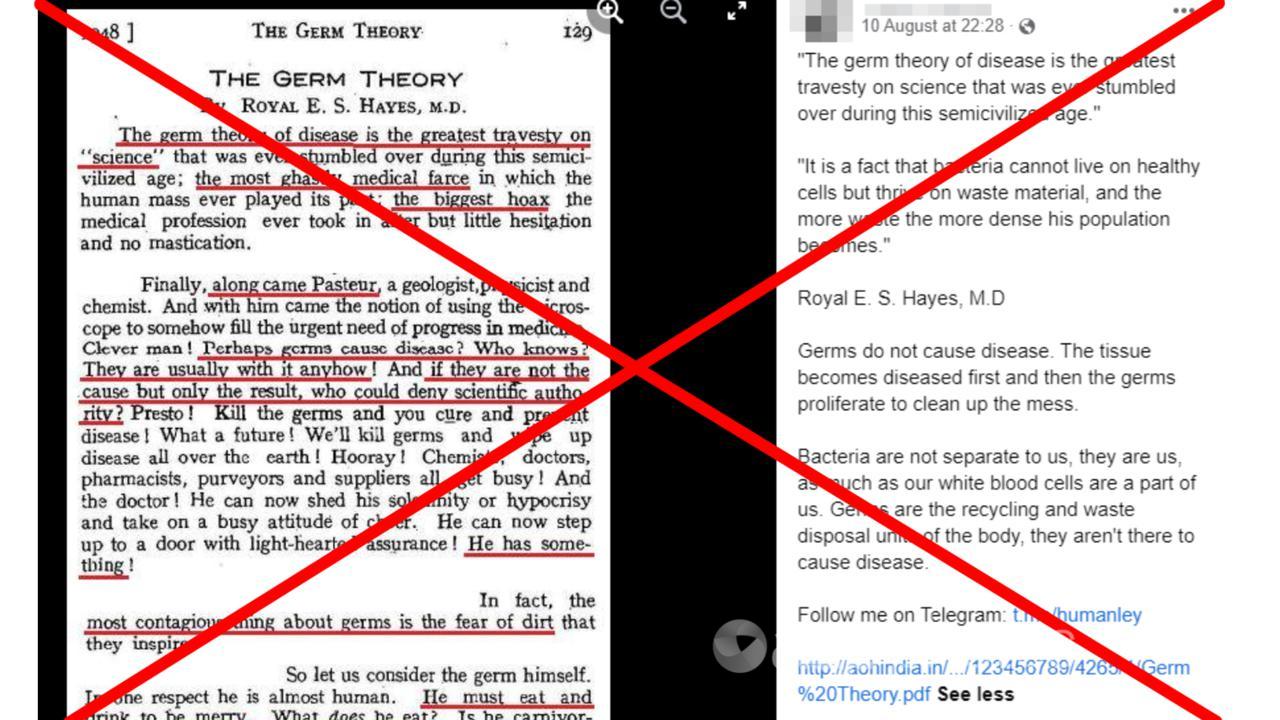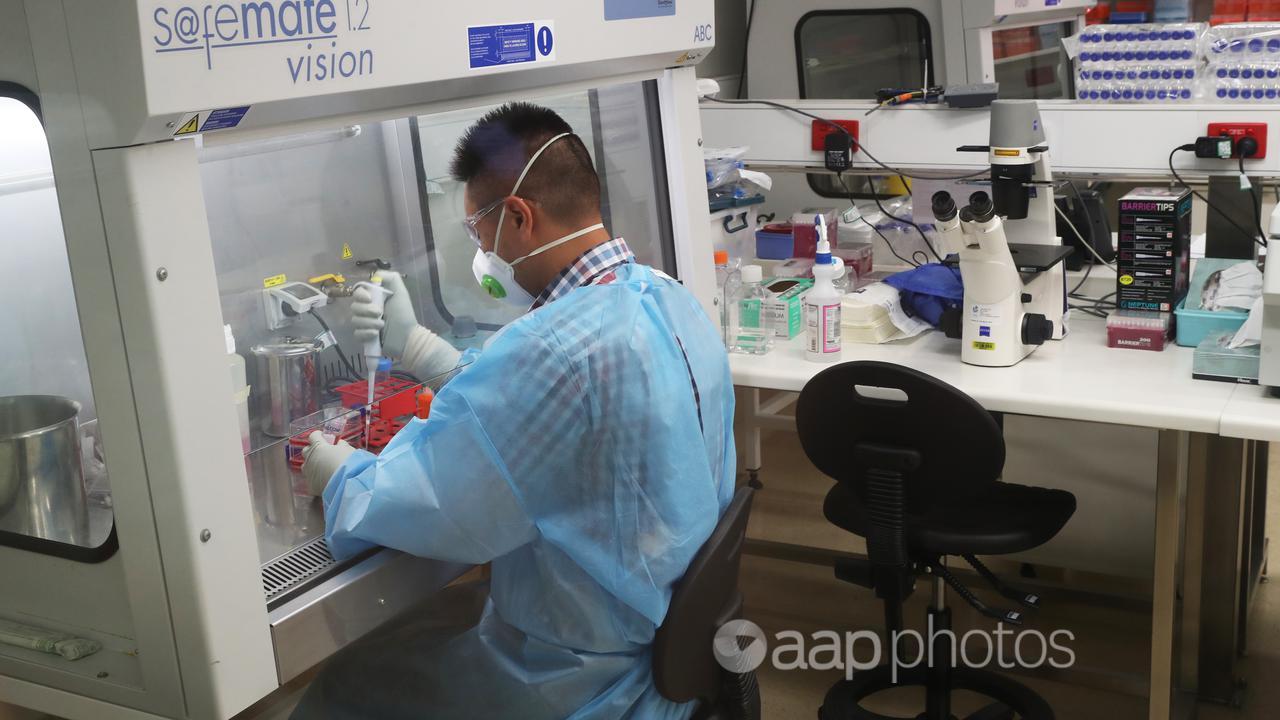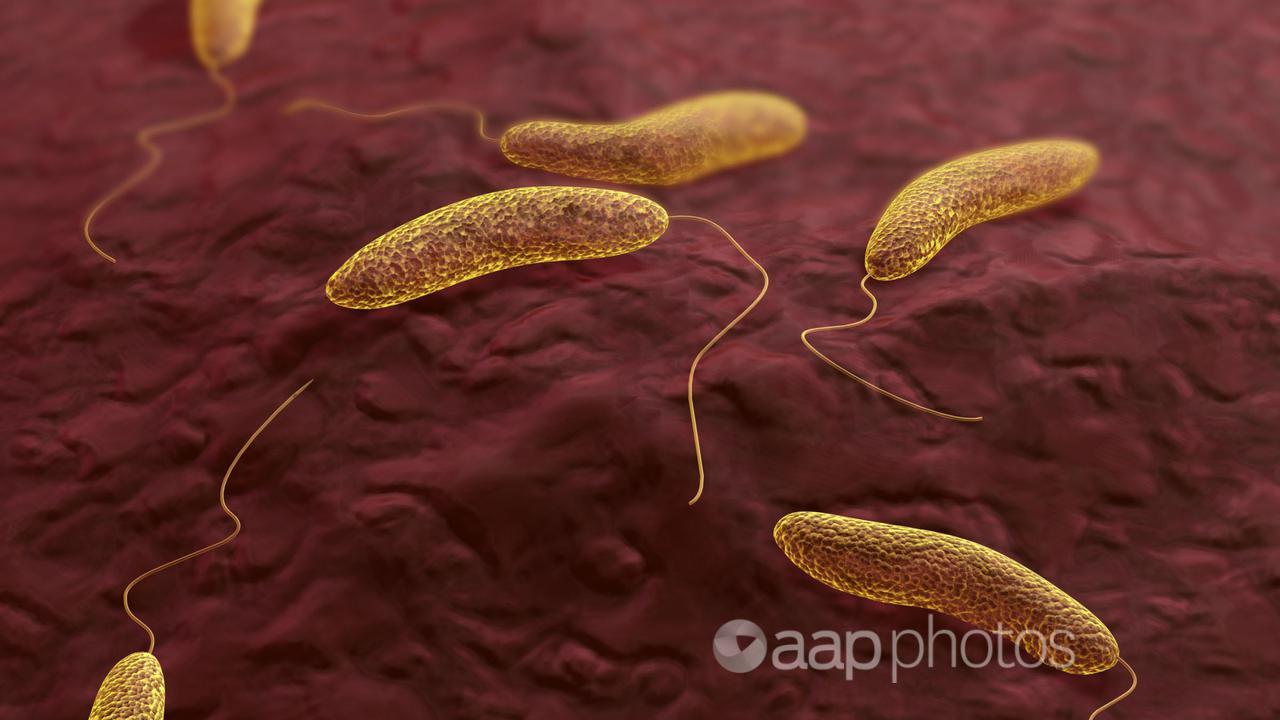A Facebook user has used a recent post to claim germs do not cause disease.
The claim is false, with experts labelling it absurd, backed up by more than 150 years of scientific discovery which shows microbes such as viruses and bacteria cause major health problems and can be deadly.
Germ theory is the discovery microbes cause disease and decay, not the other way around as was thought until the 19th century. Louis Pasteur espoused in 1861 that microbes in the air cause disease. Robert Koch built on the theory in 1876, proving specific microbes cause specific disease.
Germ theory denialism is as old as Pasteur’s theories and can be traced back to Antoine Bechamp, a contemporary of Pasteur. It argues microorganisms don’t cause disease, but injured or diseased tissue causes germs.
The Facebook post on August 11 rehashes the historical pseudoscience, claiming: “Germs do not cause disease. The tissue becomes diseased first and then the germs proliferate to clean up the mess. Bacteria are not separate to us, they are us, as much as our white blood cells are a part of us. Germs are the recycling and waste disposal units of the body, they aren’t there to cause disease.”

The post quotes American homeopathic doctor Royal Elmore Swift Hayes from an article called The Germ Theory, originally published in the journal The Homeopathic Recorder in May 1947.
“The germ theory of disease is the greatest travesty on ‘science’ that was ever stumbled over during this semicivilised age,” the article reads.
The post includes a screenshot of a page of the article and link to the entire work, which argues against vaccines and says: “Let germs do their work … Live and let live applies even to germs” (page 134).
But experts told AAP FactCheck the post’s claim is incorrect, and some germs only multiply and cause disease in healthy human cells.
Mark Nicol, professor of microbiology at the University of Western Australia, said an example of such germs were viruses causing human disease that required the “molecular machinery of a healthy cell to replicate (multiply) themselves”.
“Without a healthy host cell, these viruses are unable to multiply,” Prof Nicol said in an email.
“The same holds true for some bacteria that multiply within human cells, for example, the bacterium that causes tuberculosis. This bacterium lives and multiplies within human immune cells (which it eventually destroys).
“Other germs don’t live within human cells but are highly virulent (able to cause disease) even in the presence of healthy human cells and immune system. For example, Streptococcal bacteria that cause sore throats can do so even in healthy young children.”
Prof Nicol said it was also true the body had a broad range of defences against germs and some seldom caused disease unless those defences were compromised.
“For example, some bacteria, found on the skin, seldom cause disease, since they are unable to penetrate the healthy skin barrier. If this barrier is damaged in some way, for example by a burn, then these bacteria can invade into the deeper layers of the skin and cause infections.”
Christopher McDevitt, professor of microbiology and biochemistry at the Doherty Institute in Melbourne, said the Facebook post was not credible in any way.
“We know that bacteria are the causative agents of many diseases,” Professor McDevitt told AAP FactCheck in an email.
“This was proven prior to 1948 (time of the original post) and since with even greater accuracy. Using modern techniques, bacterial pathogens (germs) can be rendered unable to cause disease by deleting specific genes and showing that they can no longer cause infections.”
Prof McDevitt said there were extensive examples where bacterial pathogens were “caught in the act” of killing or invading healthy cells, contrary to a claim made in the Hayes article.
One example is the Nobel Prize-winning work of Australian scientists Barry Marshall and Robin Warren which established Helicobacter pylori was the causative agent of stomach ulcers, not diet or stress.

Prof McDevitt said there was no debate within the scientific community as to the robustness of germ theory.
Tim Stinear, a molecular biologist also at the Doherty Institute, said the post’s claims were absurd and there were many examples of bacteria with the capability to invade and kill healthy cells.
“Think Yersinia pestis (plague), Mycobacterium tuberculosis (TB), Salmonella typhi (typhoid), Vibrio cholerae (cholera),” Professor Stinear told AAP FactCheck in an email.
“All of these bacteria have evolved specific mechanisms that allow them to infect healthy human cells. There is a very rich canon of scientific literature gathered over the past century showing in molecular detail how these mechanisms operate, and how they operate in healthy cells.”
Jay Horvat, an associate professor of immunology and biology at the University of Newcastle, said it was true a person could have infectious pathogens in their system but not have disease, but pathogens definitely caused disease.
“This is why we need to get vaccinated, use appropriate antimicrobials, not smoke, manage our chronic conditions such as diabetes, asthma, maintain a healthy diet etc.., in order to make sure our response to pathogens is always tipped in favour of the host,” Dr Horvat told AAP FactCheck in an email.
The Verdict
The claim germs do not cause disease is false. Experts say that not only do some germs including bacteria and viruses cause disease, there are extensive examples of pathogens being caught in the act of killing or invading healthy cells.
False – The claim is inaccurate.
* AAP FactCheck is an accredited member of the International Fact-Checking Network. To keep up with our latest fact checks, follow us on Facebook, Twitter and Instagram.
All information, text and images included on the AAP Websites is for personal use only and may not be re-written, copied, re-sold or re-distributed, framed, linked, shared onto social media or otherwise used whether for compensation of any kind or not, unless you have the prior written permission of AAP. For more information, please refer to our standard terms and conditions.


















